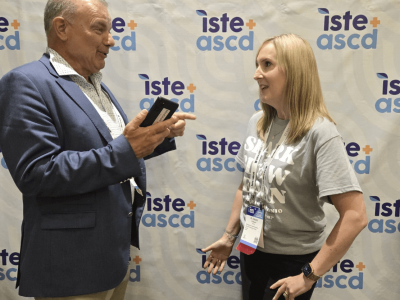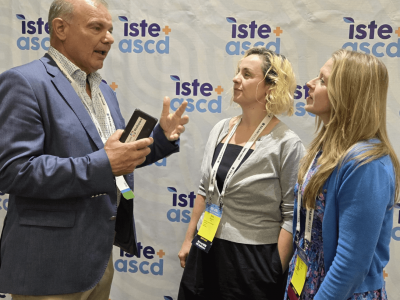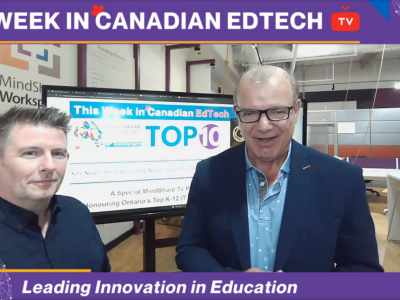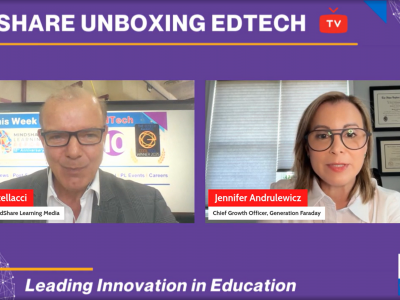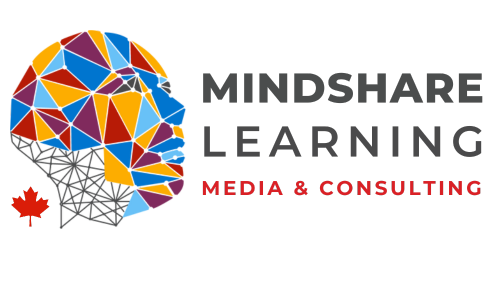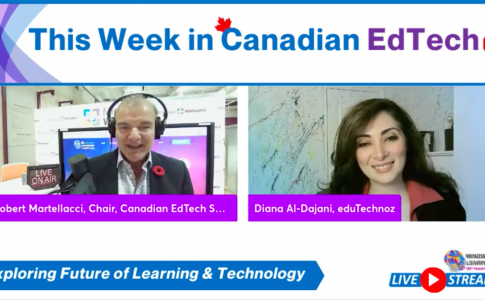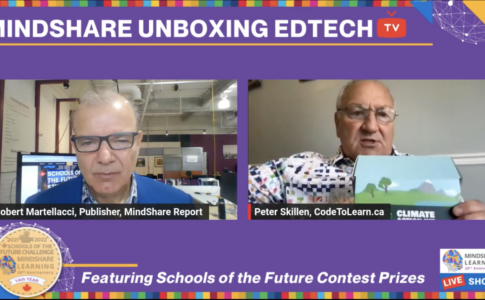by Timothy Gard, TDSB Educator & MSL Report Contributing Writer
As the title of C21’s newest paper suggests – Shifting Minds 3.0: Redefining the Learning Landscape in Canada– there is a need to change the current mindset that currently exists in Canada’s ‘Learning Landscape’. Of course this necessitates some definitions and qualifications about what needs to be changed in public education and how this ‘systematic transformation’ will occur and so the author(s) sets out on a rather succinct excursus showing how this out to be accomplished. The clarion call is to ensure that we are preparing our students for ‘…today’s complex, ever-changing world’ and so we should therefore ensure that the 7 Cs (creativity, innovation, and entrepreneurship, critical thinking, collaboration, communication, character, culture and ethical citizenship, and computer and digital technology) are effectively implemented across the spectrum of ages and grades in public education in order to prepare students for the unknown world ahead of them.
This short ‘review’ will only detail the salient points of the paper. It is my hope that you will download the document and read it in its entirety. In this way will you gain a deeper understanding of the content and how you might apply the ideas found in this document to your own context, if you haven’t already. The Shifting Minds 3.0 (SM3 hereafter) report is not in and of itself an exhaustive approach to ‘systemic transformation’. There are many books and academic papers dealing with transforming systems, or changing systems, and anyone with a cursory understanding of these topics will know that transforming and renewing a system is a challenging journey. And we must at the very least realize that meeting the needs of today’s students will be an ever-changing process because the world we live in is ever-changing. A complex and ever-changing world requires a comprehensive, well designed and cogent plan in order to be effective. Moreover, in order to introduce a system that encourages the development of the 7 guiding principles we must agree on some level that those individuals leading in this development and subsequent transformation have a mid-level competence in the core competencies themselves. In short, you cannot teach what you do not understand, or practice. The transformation then – in this proposal – must begin at the beginning: leadership must be renewed and transformed first or you will keep developing what you have not yet developed.
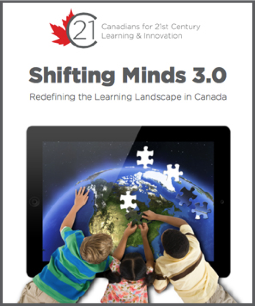 The SM3 states that we need to shift away from the current way that we do things. The current way is a ‘hierarchical policy-driven system’. What we need is an educational system that encourages ‘networks of strong, responsive schools, with educators collaborating continuously and sharing knowledge both horizontally and vertically.’ The impetus seems to be that the leaders at the top – assuming that they have the capacity and knowledge to lead in this way – will become catalysts for leadership at all levels which will in turn provoke a change at the school and classroom level so that they become ‘holistic’ and ‘adaptive’. Further, both school improvement and innovation will ‘work’ together to bind the system in balance so that ‘…all parts of the whole can adapt without spinning out of control.’ This all sounds interesting, but how does this work in the ‘real world’ of real schools and classrooms and the ever-changing environment that is in itself fraught with challenges that keep leaders from being leaders in this way?
The SM3 states that we need to shift away from the current way that we do things. The current way is a ‘hierarchical policy-driven system’. What we need is an educational system that encourages ‘networks of strong, responsive schools, with educators collaborating continuously and sharing knowledge both horizontally and vertically.’ The impetus seems to be that the leaders at the top – assuming that they have the capacity and knowledge to lead in this way – will become catalysts for leadership at all levels which will in turn provoke a change at the school and classroom level so that they become ‘holistic’ and ‘adaptive’. Further, both school improvement and innovation will ‘work’ together to bind the system in balance so that ‘…all parts of the whole can adapt without spinning out of control.’ This all sounds interesting, but how does this work in the ‘real world’ of real schools and classrooms and the ever-changing environment that is in itself fraught with challenges that keep leaders from being leaders in this way?
The challenge, of course, is that we need to move away from the traditional way of teaching and learning to what the paper calls the transformative view. Basically, we need to create a very dynamic learning context that is synergistic, social, and collaborative on all levels. The 7 core competencies are infused across the teaching landscape with teachers and students working hand-in-hand as co-learners focusing on developing a classroom environment that emphasizes thinking, research, and analysis where students develop and improve their ideas while showing deep understanding via the work they produce.
Let me quickly move through the rest of the document to point out the ‘way forward’ according to SM3. I will address these ideas under the following sub-titles: Leading the Transformation, Scaling Out and Scaling Up, Governance Models and Management Approaches, and Going Forward.
Leading the Transformation
According to SM3 those schools and systems that are working toward 21st century competencies so that their current systems can move from being great to excellent are utilizing three key strategies garnered from McKinsey Report – How the World’s Most Improved Systems Keep Getting Better. These strategies include: cultivating peer-led learning for teachers and principals; creating additional support mechanisms for professionals; and sponsoring experimentation and innovation at the system level, across all schools.
SM3 provides a useful chart outlining the change strategies that are currently in use by system leaders in Canada. The strategies include co-creating a vision, cultivating peer-led learning for teachers and principals, creating support mechanisms for professionals, and sponsor system experimentation/innovation across schools. The strategies include the tactics and the results from the use of the tactic. For example, the ‘cultivate peer-led learning for teachers and principals’ strategy used the following two tactics with subsequent results: collaborating in school, across several schools, and with other districts created the opportunity for professionals to encounter a diversity of ideas and perspectives, while the strategy of modeling inquiry for professional learning produced learning that happened in specific contexts in daily work and teachers are supported to take risks in their practice.
According to SM3 school districts that used these strategies reported higher energy levels, greater excitement and new ideas being put into practice by both students and teachers. New ways to assess and report student success are explored and social media is used to share all of the new ideas explored above. Communicating about and deconstructing the ‘old ways’ in favour of new and perhaps untried ideas in the context of mutual accountability helps to sustain and promote change across all strategies that are used to change the way things used to be done in schools. Further, the move to incorporate change and adopt an improvement and innovation cycle must start where the opportunity exists. Innovation starts anywhere it can be sustained and implemented because that’s the nature of innovation. And leaders need to be aware of the fine balance of nurturing innovation while maintaining and cultivating systemic and sustainable improvement.
Scaling Out and Scaling Up
Innovation in smaller contexts is much easier to initiate and sustain then it is in a larger context. SM3 maintains that in order to create a disciplined approach to scaling out (spreading a promising innovation to other schools) and up (changing the whole system) requires a 4 step process. You must create enabling conditions for schools to innovate (loosening policy, for example); learn what works by trying new ideas, capturing and sharing information, analyzing outcomes and redefining approaches; scaling out promising innovations to test and refine and to encourage the sharing of this system horizontally; and scaling up successful innovations to the system level to ensure that the results are sustainable. This is all done with a continuous feedback loop so that the learning is embedded across all spectrums in a system.
Every educator can tell you about overload. Administrators and teachers who are overloaded are less likely to create an innovative program, and are less able to apply energies needed to meet the seemingly ever growing needs of the communities they serve. It is argued however that true innovation can ‘unpack’ and uncover those areas of ‘administrivia’ that can be cut loose, or changed; to be free of those things that are not enabling a stronger system and create a society of teachers who can become even more innovative. SM3 speaks about social innovation and complexity theory as ways to help change a system mired in overload and irrelevancy. This kind of innovation changes the ‘business as usual’ model and implements the kind of change that – in the system of education – will be more able to meet the needs of today’s student, and empowering teachers and administrators with the vision to make the kinds of systemic changes that have lasting impact.
Moreover, complexity theory offers the kind of ‘mindset’ that will help to create the kind of environment that is innovative, responsive and is enduring and widespread. SM3 lists seven key ideas from complexity theory. I won’t go into all of them here but suffice it to say the ideas speak of creating collaborative, risk-taking, flexible, focused environments where teachers and administrators become active agents in changing the ‘status quo’. This kind of empowerment will if sustained create the kind of innovative working environments that will meet the needs of our students for the 21st century.
Governance Models and Management Approaches
Obviously, governance models and the way schools and systems are managed need to change if the above it going to work. SM3 lists three different ways policy frameworks are worked in provincial contexts: central direction; non-intervention approaches and enabling and permissive approaches. These frameworks will obviously have an impact on the way innovation is approached and the kind of scale this innovation will take. It is clear however that each jurisdiction will not work entirely in one framework.
Indeed, for transformation to take place the system must take into account the diverse views that it’s constituents represent. The ‘public’ in ‘public education’ must not be ignored; diversity is necessary and if the approach is open and consultative then much can be garnered from the new ideas and collaboration is fostered. This is by no means an easy process however more ‘minds’ at the table eliminates the danger of creating policy for a group that does not represent the whole.
SM3 continues on to discuss how complex adaptive systems can enable leaders to harness the power of diverse relationships in complex systems. SM3 then uses a chart to compare the differences between traditional systems versus complex adaptive systems. In short, complexity is to be welcomed and embraced and the move away from the traditional modes of practice where change is initiated and sustained by individuals who hold formal positions of power rather than from people of influence across the broad spectrum of education, regardless of position. Again, SM3 helps to clarify how systems can start to identify these change agents and foster innovation in an open, and, might I add, non-judgmental way.
Going Forward
There are a myriad of demands facing schools today. This is not a bad thing since these demands would be non-existent if the importance of our public education system was not realized. But the demands and the complexities of coping with ever new and powerful ‘foes’ that seemingly have been exacerbated with technology continue to challenge the system. The time to re-think the way we ‘do’ education is now and will ever be upon us. New systems of learning with innovative practices initiated and sustained at every level need to be fostered. We must become more collaborative at every level, listening to every voice while escaping the ‘strings’ of the standard approach to doing education. New ideas and innovative practices must be encouraged so that our students are prepared for a 21st century society.Transformation is possible! SM3 lists six interconnected parts of a whole process for shifting the system drivers: shifting curriculum; shifting pedagogies; shifting learning environments; shifting assessment; shifting governance and shifting citizen and stakeholder engagement.
In conclusion, the very things we wish to see our students achieve we must live out now in order to bring the transformation that is needed to meet the challenges of a complex society in need of a resilient, collaborative and empowering public education system. The future is ours but we must make every effort to delve into it headlong with the 7 competencies that we are seeking to inculcate across our public education systems. Shifting Minds 3.0 is a good place to ‘prime the pump’ of creative thinking about how we might continue this process of creating an educational system that is expected by all stakeholders.
